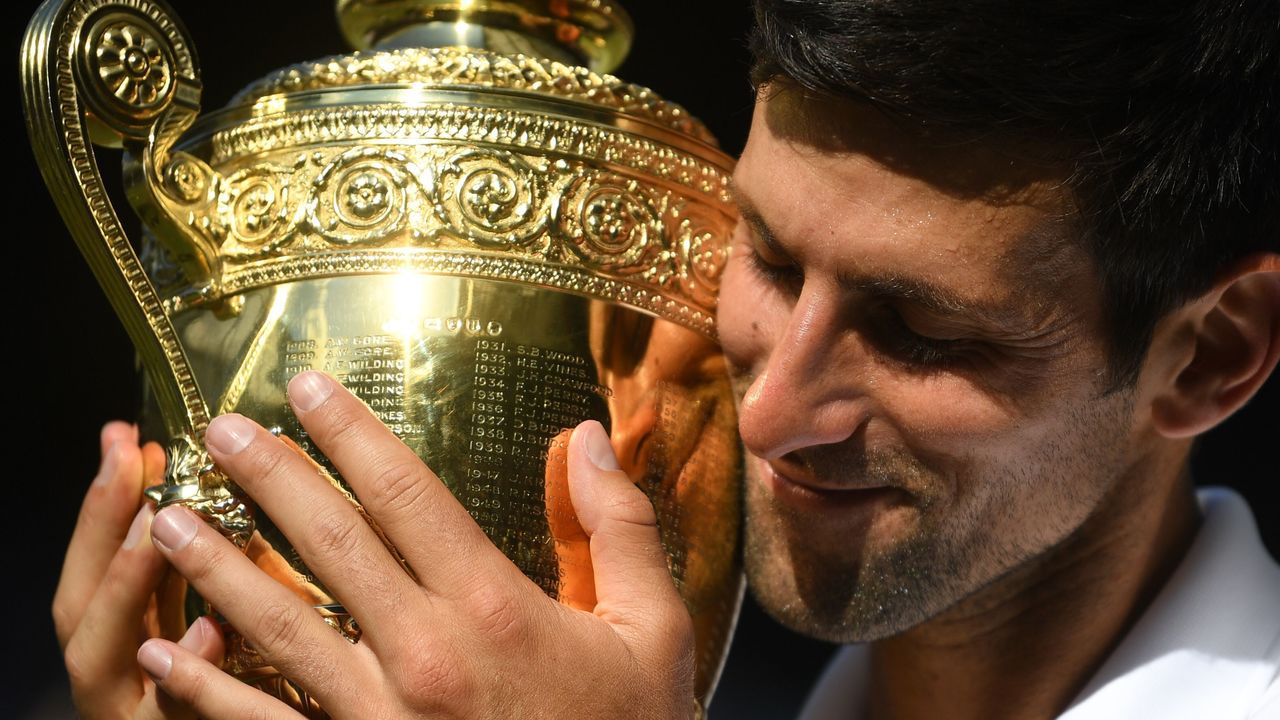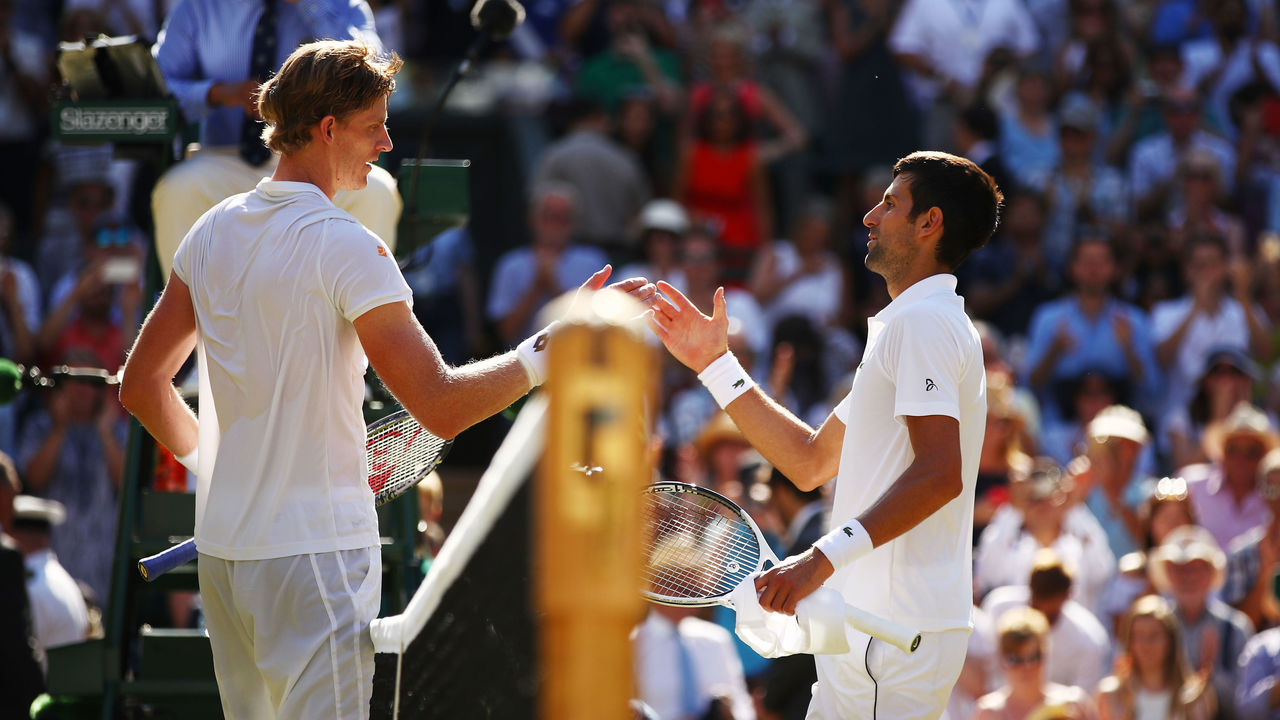Djokovic completes comeback with businesslike championship performance
Novak Djokovic's routine, straight-sets win over Kevin Anderson in Sunday's final is not the match his 2018 Wimbledon will ultimately be remembered for.
His five-set semifinal tussle against Rafa Nadal will be the match that lives on in hearts and minds, while the ensuing anticlimax against Anderson becomes a footnote - much like Nadal's drama-free French Open win over David Ferrer in 2013 after Nadal had survived Djokovic in a de facto final the round prior.
For Djokovic, the final was just about taking care of business. And the reason it was unremarkable in the end was that he did just that, with hardly a misstep and nary a moment of doubt. He took advantage of a stiff and nervy Anderson (who'd been on court for 11 hours and played the rough equivalent of 16 sets over his previous two matches) to thoroughly dominate the first two sets.
Anderson, who'd ridden his serve through the first six rounds of the tournament, looked wholly unprepared for the consistency and depth of Djokovic's returns. Once Djokovic was able to reset those points to neutral, he knew he could construct them however he wanted. He'd pull Anderson forward to set up the pass, or attack low and down the middle to exploit Anderson's tired legs and heavy feet. He could afford to hit with fat margins because he had Anderson on a string and could reliably bank on provoking errors off the ground if he could just make the 6-foot-8 baseliner a little bit uncomfortable. Anderson was always going to have to get a ton of free points with his serve in order to make this a match, but nothing came easy for him.

Meanwhile, Djokovic's serve remained on point, and didn't come under any pressure until the third set, when the mountain already seemed a little too high for Anderson to climb. Djokovic broke in the opening game of the match and from that point on looked incredibly relaxed, able to apply his game plan without being nudged an inch outside his comfort zone. Unlike so many of his matches the past two years, he played with the ease of someone who knew exactly what he was going to do and how he was going to do it.
We should spare a thought here for Anderson. The 32-year-old was playing in his second Slam final in the last 10 months, after failing to advance past the quarters in his first 33 main-draw appearances. He'd pulled off the upset of the tournament two rounds earlier by coming back from two sets down to stun Roger Federer with a 13-11 fifth set, and followed it up by outlasting John Isner 26-24 in the fifth of a 99-game semifinal, a match in which Anderson served the ball 278 times. He'd spent over 20 hours on court since the start of the tournament, had played more total games in one Wimbledon than any player in history, and needed to have his overworked arm treated by a trainer in the final. He could have seen the writing on the wall, could've tapped out after getting trucked in those first two sets. He didn't.
Instead, Anderson battled; he started to loosen up, returned better, struck the ball cleaner, and moved more fluidly. Finally, near the end of the third set, his opportunity arrived. Djokovic started tossing in double faults while serving at 4-5, and gave Anderson a pair of set points. With Anderson's comeback against Federer still so fresh, the moment carried a bit more gravity than it might have otherwise. The memory of Anderson completely turning the tide while growing steadily stronger and more confident, could not have been far from either man's mind.
But Djokovic saved the two set points - one of them by the grace of the Wimbledon gods, when he stuck a forehand on the outer edge of the baseline and drew a mid-point roar from a drama-starved crowd - and held. Undeterred, Anderson would hold at love and earned four more set points two games later, but Djokovic fended those off with more of the clutch serving that had come so handy against Nadal. That was Anderson's last gasp; the tiebreaker was one-way traffic.

And so, Djokovic made it back to the top of the mountain, at the same tournament where he first began to tumble from his staggering heights in 2016. Not bad for a guy who wasn't even sure he wanted to play the grass season after suffering a crushing French Open loss. His stiffest test at this tournament may have come in the semis, but, after that emotional and physical whirlwind, the final tested his ability to refocus and sustain his rediscovered form.
With his win over Nadal, Djokovic had already proven what he needed to prove to himself; had reminded himself of who he was, and may yet be. And then, when it came time to make that win stand up, to make it mean even more than it already did, Djokovic did so decisively, and left no doubt.
"After everything I've been through in the last couple of years - the injury, the moments of doubt and disappointment and frustration, getting out of the top 20, having a surgery - I must admit there were several times when I thought I might not be able to get back on the level," Djokovic said after the match. "I changed the racket, and several different things, and had to compensate the entire game. And here I am today. ...
"There's no secret about that. It's gonna come with time. When I was, earlier this year, in Indian Wells, I was very impatient. And I had to learn how to be patient, and to trust the process, and have faith in my own capabilities.
"Right now I'm here, holding this trophy, and this can be a great turnaround."
HEADLINES
- NBA Cup roundup: Celtics end Cavs' hot start, Russ makes history
- Doncic returns from injury to score 26 as Mavericks top Pelicans
- Westbrook becomes 1st player to record 200 triple-doubles
- McDavid's 3 points lead Oilers to win over Senators
- Garrett: Watt shouldn't feel '2 ways' after losing 2023 DPOY race